Industry
During most of the Soviet Union's seventy-four years, industrialization provided it with its reason for being. Amid the chaotic Russian Civil War (1918-22), the Bolshevik-dominated state sustained its war effort by controlling virtually every substantial enterprise. Some radicals saw nationalization as part of a rapid leap from capitalism to communism, but realistically it was a result of industry's collapse. The number of workers fell to less than half the 1917 level, encouraging initiatives to militarize factory and mine workers to make up the labor shortage. At the end of 1921, Vladimir Lenin introduced the New Economic Policy, or NEP, which provided a mix of state and private activity to encourage economic reconstruction. [Text continues at bottom of page]

Government agencies controlled "the commanding heights" of the economy, including foreign trade, banking, and transportation, but primarily the heavy industry that had survived the war. This mixed with private activity in food, services, and consumer goods to accelerate economic recovery.
Debates raged within the Communist Party about how to industrialize, how quickly to do so, and how to pay for necessary imports of equipment.
By 1928, Josef Stalin, having defeated rivals to secure political power, ended those debates by backing a rapid industrialization plan reminiscent of the maximal project proposed by his defeated rival Leon Trotsky. Favoring centralized control by the state, Stalin and his supporters saw heavy industry as the key to defending the USSR from its many enemies. The Soviet Union purchased machine tools, production lines, and blueprints from Western firms desperate for business amid the Great Depression.
During the First Five-Year Plan (1928-32), the Soviet Union had brought in American engineers to build Ford-style production lines turning out tractors, trucks, and autos, which also had the potential to manufacture tanks, planes, and other requirements of a modern military. Investing every spare ruble in heavy industry, the Stalinist state forced workers to toil in return for stingy rations of food, clothing, footwear, and other necessities. Moreover, the state paid for the imported industrial plant with grain requisitioned from brutally collectivized peasants and with raw materials often extracted using compulsory labor. The First Five-Year Plan achieved astounding public-relations victories at enormous cost. Although the inflated official figures showed a doubling of industrial production---and more than that in some key sectors---growth was impressive, especially in stark contrast to the failure of capitalist economies mired in the Great Depression.
During World War II, the costly investments of the 1930s proved to be assets. Individual projects demonstrated their worth by humming day and night to equip the Red Army. Strategically constructed on barren steppe east of the Ural Mountains, the world's largest steel production complex, Magnitogorsk, produced half of the steel used in Soviet tanks during the war. The government reacted to the German surprise attack, moreover, by evacuating 1500 strategically important enterprises from western regions, re-establishing them safely beyond the enemy's reach. Thus the Soviet Union was capable of continuing to fight even after western industrial regions fell to the Germans in 1941. By 1945, the Soviet Union had lost some 32,000 industrial enterprises and as much as half of its railway mileage, a significant percentage of its industrial capital. Glorying in victory but reeling from the loss of more than 25 million people, the Soviet Union endured further travails. A postwar famine coincided with further austerity designed to speed postwar reconstruction and, by 1947, to rearm for the Cold War conflict with the United States. Officially industrial production rapidly rebounded to prewar levels, but in reality rebuilding continued well into the 1950s.
Although the Soviet Union's industrial base had won the war, it proved in the long run an unstable economic foundation and a mixed blessing. Favoring steel over shoes, the industrial economy that postwar leaders had helped to build in their youth in the 1930s had been good enough to win the war, a fact discouraging almost all of them from recognizing the necessity of innovation and diversification. Around 1960, Premier Nikita Khrushchev did initiate investment in synthetic fibers and agricultural chemicals, in which the USSR had lagged behind. Then the Soviet Union discovered vast oil and natural-gas fields, which it lucratively exported to Western Europe during the boom in global energy prices in the 1970s. However, the profits from this trade financed importing consumer goods to ensure domestic stability and investing in top-secret, high-technology sectors of the military-industrial complex. Investments in modernizing industrial capital, by contrast, returned little. Although the Soviet Union extolled a "Scientific-Technical Revolution," it continued to rely on an industrial model inherited from the 1930s. Few incentives encouraged enterprises or their managers to innovate. As capitalist economies underwent de-industrialization and there was a rise in post-industrial enterprises based on services and information, the Soviet Union plodded along with its constrained consumer economy, an aversion to computers, and bureaucratic brakes on efficiency. By the mid-1980s, new General Secretary Mikhail Gorbachev inherited an industrial sector desperate for re-making but resistant to reform.
Suggested Reading and Materials
Stephen Kotkin, Magnetic Mountain: Stalinism as a Civilization (University of California Press, 1995).
Stephen Kotkin, Steeltown, USSR: Soviet Society in the Gorbachev Era (University of California Press, 1991).
Moshe Lewin, The Soviet Century (Verso, 2005).
Moshe Lewin, The Making of the Soviet System: Essays in the Social History of Interwar Russia (New Press, 1985).
Alec Nove, An Economic History of the USSR, 3rd ed. (Penguin, 1993).
Seventeen Moments of Spring, "Economics" http://soviethistory.msu.edu/theme/economics/
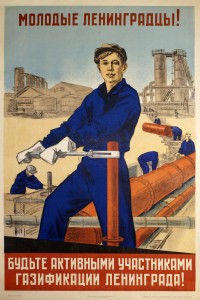
![PP 176: Do you know what a standard is? A standard is a law that sets a quality of production in the interest of the whole economy. [Quote, upper right corner] “We cannot tolerate any longer the horrible production quality of some of our manufacturers! It has long been time to remove this shameful stain.” --J. Stalin.](https://www.posterplakat.com/thumbs/the-collection/posters/pp-176/pp176-200x273.jpg)
![PP 199: The year 1965 will produce 35,000,000 tons of mineral fertilizer.
[In result] We will get an additional three million pood of grain.](https://www.posterplakat.com/thumbs/the-collection/posters/pp-199/pp199-200x300.jpg)
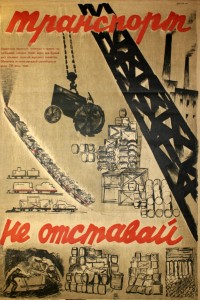
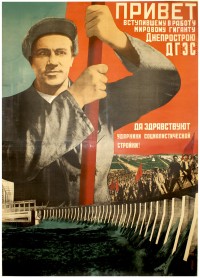
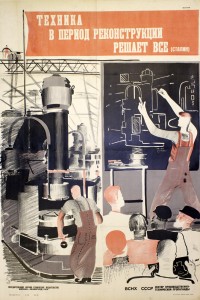
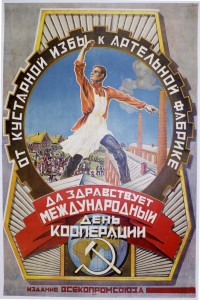
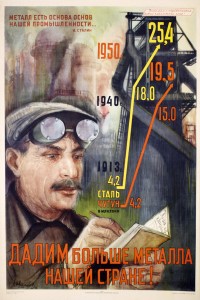
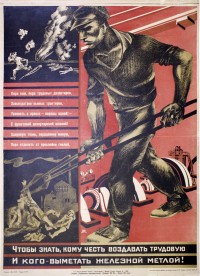
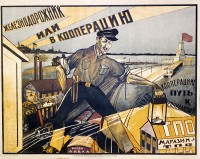
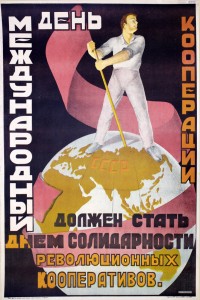
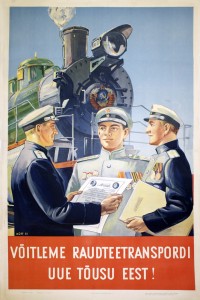
![PP 393: All together for the meeting of members of cooperatives!
Member! Attend the State Cooperative Meeting to elect your committee.
[At left] Eradicate the diseased parts of the cooperatives.
Each candidate for the committee, think about this and then after this [go] vote!](https://www.posterplakat.com/thumbs/the-collection/posters/pp-393/pp393-200x300.jpg)
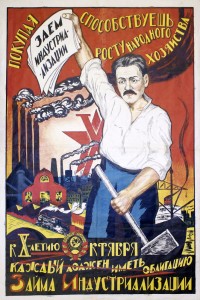
![PP 436: The Dnieprostroi Is Built
[Quote at upper left] “There are no fortresses such that the Bolsheviks could not take them.](https://www.posterplakat.com/thumbs/the-collection/posters/pp-436/pp436-200x147.jpg)
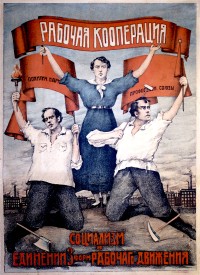
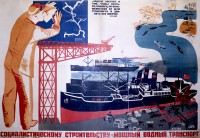
![PP 469: Russia, to the aid of the Donetsk miner!
[Between train tracks] Comrade workers of all Russia and you aware and honest peasants!
Direct your gaze in the direction of the Donetsk coal deposits. If you help him, he will give you more in return. In exchange for bread, clothes and shoes the Donetsk proletariat will give you their valued coal, which will heat, light and revive the whole country. Soviet Russia, to the aid of the Donetsk miner!
(From an article by Lev Trotskii)](https://www.posterplakat.com/thumbs/the-collection/posters/pp-469/pp469-200x300.jpg)
![PP 477: [Hand-written text at lower right] “We are for peace.…”](https://www.posterplakat.com/thumbs/the-collection/posters/pp-477/pp477-200x279.jpg)
![PP 478: I Will Become A Metal Worker!
[Lower text] Young men and women! Let’s help create powerful worker reserves for the Soviet State.
Enroll in vocational schools, railway schools and the FZO (factory and plant training school).](https://www.posterplakat.com/thumbs/the-collection/posters/pp-478/pp478-200x300.jpg)
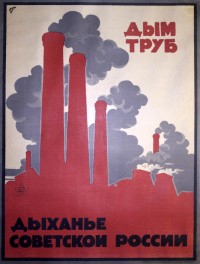
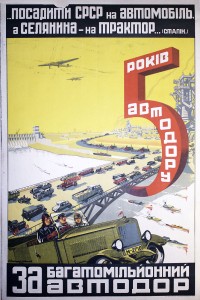
![PP 576: How to make calico from bread? [Partial translation]](https://www.posterplakat.com/thumbs/the-collection/posters/pp-576/pp576-200x121.jpg)
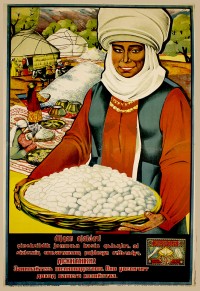
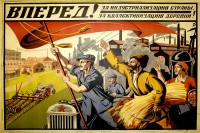
![PP 677: Everything for the miner!
Our bayonet is as sharp as it used to be.
The worker’s pick is ready.
The Red Army man and the miner
–base of the flaming soviets.
The vermin ran away squealing
And kept running faster and faster.
Now it’s time to stick the pick
Into the black rock of the Donbass.
[Partial translation]](https://www.posterplakat.com/thumbs/the-collection/posters/pp-677/pp677-184x300.jpg)
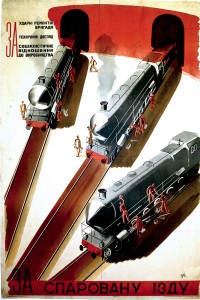
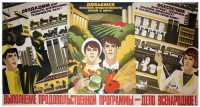
![PP 774: [On the top]
The place where cooperation is not respected
[On the bottom]
The place where cooperation works.](https://www.posterplakat.com/thumbs/the-collection/posters/pp-774/pp-774-catalog-image-200x294.jpg)
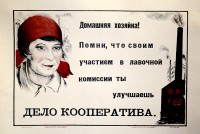
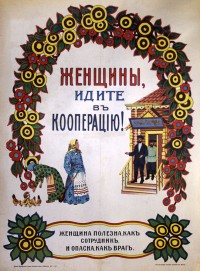
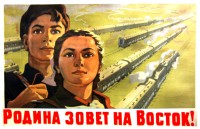
![PP 842: To All State Organizations and Management Committees
The Directorate of Yaroslavl's Typography G.S.N.Kh. is accepting various orders for these jobs – typography, lithography, binding and lined papers. Newspaper, magazine, brochure, art poster, diagram, label, blueprint, map printing. [Bottom] After a three year hiatus the Directorate of Yaroslavl’ State Typography has launched a Department of Lithography. Yaroslavl’, 75 Respublikanskaia Street, Telephone 42.](https://www.posterplakat.com/thumbs/the-collection/posters/pp-842/pp-842-catalog-image-200x267.jpg)
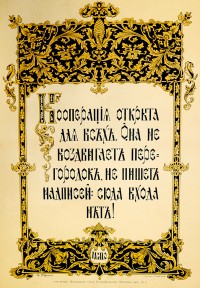
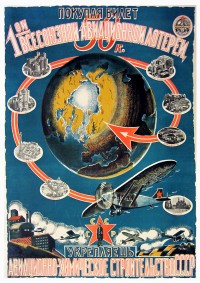
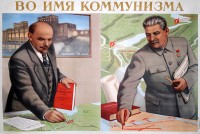
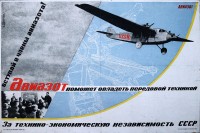
![PP 990: Fonts - Inks - Machines. State Trust of Vesenkha
Poligraf
, Moscow, 14 Leont'evskii [Lane].
Branches in Leningrad, Kharkov and Rostov-on-Don.
Printed using inks produced in-house by Poligraf Trust: Diamond gloss, Light blue gloss, Deep blue gloss, Prussian blue,
Silken green,
Dark chrome yellow.](https://www.posterplakat.com/thumbs/the-collection/posters/pp-990/pp990-200x276.jpg)
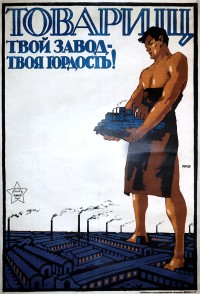
![PP 1009: Use of funds received through USSR state loans.
[Top Image]: For collectivization of agriculture
. For education. For industry. For public-health services.
[Bottom image]: In the Tsarist era [everything was] For religion. For the police.
For the army
. For prisons.
For debt repayment.](https://www.posterplakat.com/thumbs/the-collection/posters/pp-1009/pp1009-196x300.jpg)
![PP 1015: Go to [the aid of] the Donbass!](https://www.posterplakat.com/thumbs/the-collection/posters/pp-1015/pp1015-200x284.jpg)
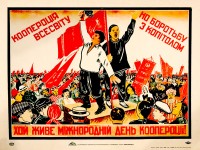
![PP 1020: Everyone [to participate] in the new consumer-cooperative elections.
We’re promoting [male] shock workers and [female] shock workers to leadership positions in the cooperatives.](https://www.posterplakat.com/thumbs/the-collection/posters/pp-1020/pp1020-200x283.jpg)
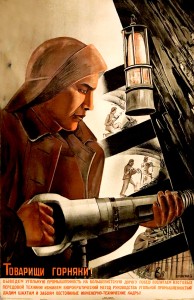
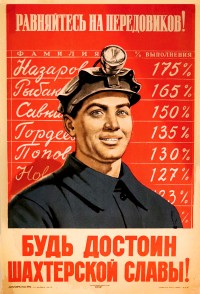
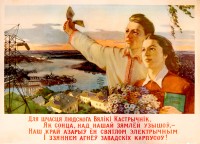
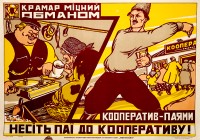
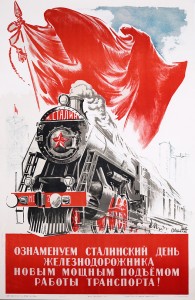
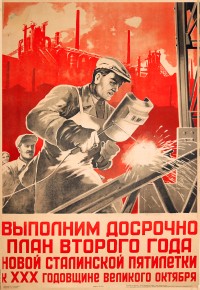
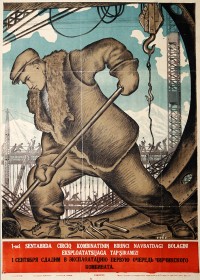
![PP 1086: Day of the Forest - A Turn to the Restoration of Forestry.
Panel 1). We don’t account for that which is everywhere.
Panel 2). We lament that which has been lost and then we cry from grief.
Panel 3). In vain they chopped-down [the forest] and it perished, but the Komsomols planted,
a green forest began to grow, harmoniously growing, as it should. [Partial translation]](https://www.posterplakat.com/thumbs/the-collection/posters/pp-1086/pp1086-200x158.jpg)
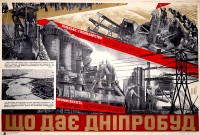
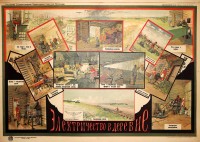
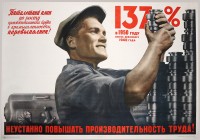
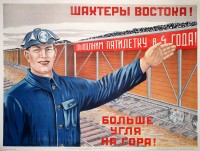
![PP 1179: Cooperative Members.
Start book partnerships in your societies!
Establish book collections [in] reading houses, farm buildings!
Help schools!!](https://www.posterplakat.com/thumbs/the-collection/posters/pp-1179/pp-1179-catalog-image-200x146.jpg)